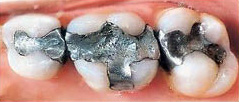Dental fillings are a common and essential part of modern dentistry. They serve to restore the function and integrity of tooth structure that has been compromised by decay, fractures, or wear. Understanding the process, materials, and care involved in dental fillings can help patients make informed decisions about their oral health. This article delves into the details of dental fillings, covering types, procedures, benefits, and aftercare.
What Are Dental Fillings?
A dental filling is a treatment used to repair minor fractures, decay, or damage to a tooth’s surface. The primary goal of a filling is to restore the tooth to its normal function and shape while preventing further decay by closing off spaces where bacteria can enter.
Types of Dental Filling
There are several materials used for dental fillings, each with its own advantages and disadvantages. The choice of material depends on the location of the filling, the extent of the repair, patient preference, and cost considerations.
If you are interested in dental filling, we in east dental clinic is happy to provide you with different filling options

- Amalgam Fillings
- Composition: Made from a mixture of metals, including silver, mercury, tin, and copper.
- Advantages: Highly durable and strong, suitable for back teeth where chewing pressure is greatest. Less expensive.
- Disadvantages: Silver color is noticeable and can be aesthetically displeasing. Contains mercury, which raises health and environmental concerns.
- Composite Fillings
- Composition: Made from a mixture of glass or quartz filler and can be color-matched to the tooth.
- Advantages: Aesthetically pleasing due to the natural tooth color. Bonds directly to the tooth structure, providing additional support.
- Disadvantages: Less durable than amalgam, particularly for large fillings. More expensive and time-consuming to place.
- Ceramic Fillings
- Composition: Made from porcelain.
- Advantages: Highly durable and resistant to staining. Matches the natural color of the tooth.
- Disadvantages: Can be more brittle than composite fillings and are often more expensive.
- Gold Fillings
- Composition: Made from a gold alloy.
- Advantages: Extremely durable and can last for decades. Biocompatible with gum tissue.
- Disadvantages: Very noticeable due to the gold color. High cost.
- Glass Ionomer Fillings
- Composition: Made from acrylic and a specific type of glass.
- Advantages: Release fluoride, which can help protect the tooth from further decay. Good for children and for fillings below the gum line.
- Disadvantages: Less durable and wear down faster than other materials.
Dental Filling Procedures
The process of getting a dental filling typically involves the following steps:
- Diagnosis: The dentist examines the tooth and may use X-rays to determine the extent of decay or damage.
- Preparation: The area around the tooth is numbed with a local anesthetic. Any decay or damaged areas of the tooth are removed using a drill, laser, or air abrasion instrument.
- Filling Placement:
- For amalgam fillings, the dentist places the material directly into the cavity and shapes it before it hardens.
- For composite fillings, the tooth is isolated and kept dry. The filling is placed in layers, with each layer being hardened using a special light. The final layer is shaped and polished to match the natural tooth.
- Finishing and Polishing: The dentist checks the bite and makes any necessary adjustments. The filling is polished to ensure smoothness and prevent staining.
Benefits of Dental Fillings
- Restores Function: Dental fillings restore the tooth’s normal function, allowing for proper chewing and speaking.
- Prevents Further Decay: By filling the cavity, the dentist prevents bacteria from entering and causing further decay.
- Aesthetic Improvements: Modern filling materials can closely match the natural color of teeth, improving the appearance of the smile.
- Durability: Depending on the material used, fillings can last for many years with proper care.
Aftercare for Dental Fillings
Proper aftercare is essential to ensure the longevity and effectiveness of dental fillings. Here are some tips for taking care of your fillings:
- Oral Hygiene: Maintain good oral hygiene practices by brushing twice a day with fluoride toothpaste and flossing daily. This helps prevent decay around the filling.
- Regular Dental Visits: Visit your dentist regularly for check-ups and cleanings. The dentist can monitor the condition of your fillings and detect any issues early.
- Avoid Hard Foods: Be cautious with hard foods and objects, such as ice or pen caps, which can crack or damage fillings, especially composite and ceramic ones.
- Manage Sensitivity: It’s common to experience some sensitivity after a filling. This usually subsides within a few days. If sensitivity persists or worsens, contact your dentist.
- Monitor for Changes: Pay attention to any changes in your bite or any discomfort in the filled tooth. If you notice cracks, chips, or wear, seek dental advice promptly.
Potential Issues with Dental Fillings
While dental fillings are generally safe and effective, there can be some potential issues:
- Allergic Reactions: Rarely, some patients may have an allergic reaction to the materials used in fillings, particularly amalgam.
- Filling Failure: Fillings can wear down, crack, or fall out over time. Regular dental check-ups can help detect these issues early.
- Tooth Sensitivity: Some patients may experience prolonged sensitivity to hot, cold, or sweet foods. This usually resolves on its own but can occasionally indicate a more serious issue.
Conclusion
Dental fillings are a critical component of dental care, providing a means to restore damaged teeth and prevent further decay. By understanding the types of fillings, the procedure, and proper aftercare, patients can make informed decisions and maintain optimal oral health. Regular dental visits and good oral hygiene practices are essential to the longevity and success of dental fillings, ensuring a healthy, functional, and attractive smile.
read also (Tambal gigi)
